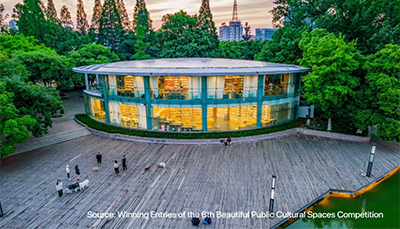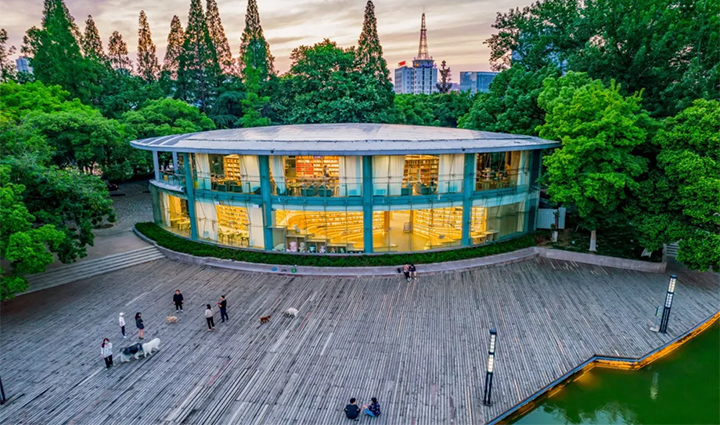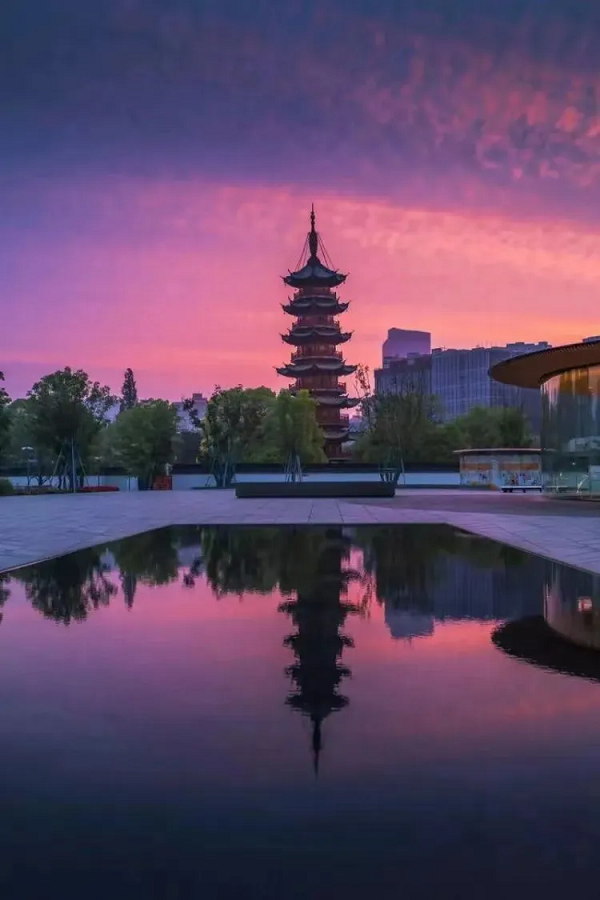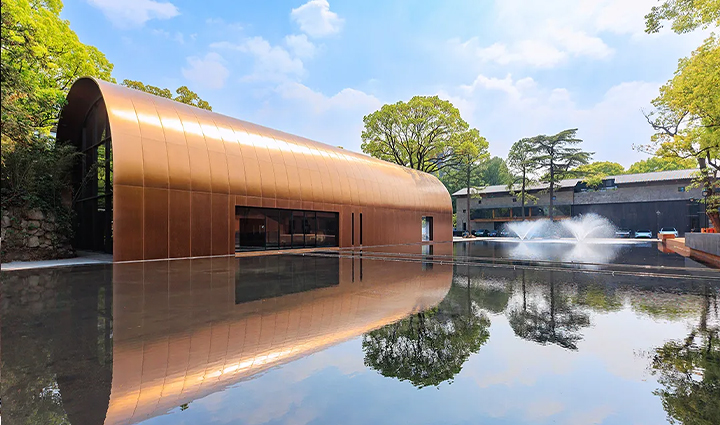


Introduction
A beautiful city is not just a rich repository and production space for artistic creations; it itself is a great public work of art that provides social inclusivity and cultural diversity.

[Photo/Winning Entries of the 6th Beautiful Public Cultural Spaces Competition]
How to create a city with cultural landscapes?
Public spaces are areas where citizens and visitors interact with each other and freely move about. These open areas also serve as places for enjoying city life, experiencing urban culture, and showcasing city charm. Public spaces are not only streets, squares, and cultural facilities; human-scale historic districts as the city’s living room, can also provide opportunities for cultural life. All public spaces reflect cultural aspects, and all cultural facilities should be open spaces.
Urban culture encompasses all aspects of a city. Historically, streets, boulevards, squares, and parks have shaped urban culture; today, cities have become centers for cultural production, living, and creation. A beautiful living environment is the foundation of citizens' happiness, and beautiful public spaces are creations of good living in the natural environment. Historic cities are open museums, and pleasant environments are cultural parks for residents.
Is a city a cultural landscape? There is no consensus on this question. Scenic areas like West Lake and Lushan Mountain have been listed as cultural landscapes on the World Heritage List, but the cultural significance of cities has not received enough attention. Cultural geographers believe that the built environment typically represents a redrawing of a landscape. All cultural landscapes tell their history, life, culture, and political ideals, and cultural landscapes have become a repository of space imbued with regional cultural significance by history.
Cities are the largest built environments created by humans. A beautiful city is not just a rich repository and production space for artistic creations; it itself is a great public work of art hat can provide social inclusivity and cultural diversity. The Japanese architect Riken Yamamoto, who just won the 2024 Pritzker Prize, emphasizes in his architectural design a focus on the urban context and reliance on environmental surroundings, creating a representation of “natural scenery” and “artificial landscapes.”
“Cities are carriers of a nation's culture and emotional memory, and historical culture is key to a city's charm.” A city is a place where people live, and as an organic living entity, change is its fundamental characteristic. But a city as a historical accumulation and cultural landscape is the crystallization of material production and intellectual creation over generations. Therefore, the historic city inhabited by people, a living cultural heritage, with its historical texture and characteristics, is indispensable for cultural continuity, quality of public spaces, social structure, and diversity and richness of the built environment, requiring protection in priority and active preservation.

[Photo/Winning Entries of the 6th Beautiful Public Cultural Spaces Competition]
Good architecture and good urban design
In the 1970s, renowned urban design theorist Kevin Lynch noted that “beautiful, delightful urban environments are exceedingly rare, and some even believe they cannot exist,” lamenting that “unfortunately, most Americans are unaware of the significance of such urban environments.” A harmonious urban environment is part of a vibrant world and should become an enjoyable backdrop to everyday life.
Among the various elements of sustainable living environments, “culture” and “beauty” are indispensable, but these aspects have been overlooked by those focused primarily on economic efficiency and ecological indicators. A few years ago, the UK revised its “National Planning Policy Framework”, emphasizing the importance of beauty and place-making. This was the first time since the framework was established in 1947 that the concept of beauty was specifically incorporated into national planning policy, with the vision of promoting the design and formation of beautiful spaces, allowing people to pursue beauty in their daily lives and restoring the ability to create beauty and art in the built environment.
“Today’s architecture is tomorrow’s heritage” is a saying many have likely heard. Indeed, architecture constitutes the basic features of a nation’s or region’s history, culture, and life structure. Good architecture is an important means of artistic expression in citizens’ daily lives and can become tomorrow’s cultural heritage. However, this does not mean that newly constructed buildings with substantial investments will automatically become future heritage.
Design is both an engineering discipline and an art form. Due to historical reasons, architectural design in China has long followed the fundamental guideline of “functional, economical, and aesthetically pleasing within possible conditions.” The Central Urban Work Conference in 2015 clarified a new architectural guideline of “functional, economical, green, and aesthetically pleasing.”
Design is everywhere. Urban design is the art of building cities, a practice through which people create the built environment to realize their desires and express their values. Thus, we should create possibilities for building beautiful cities based on a shared aesthetic consensus among citizens, collectively creating high-quality environments and sustainable urban communities.

[Photo/Winning Entries of the 6th Beautiful Public Cultural Spaces Competition]
Innovation of Environmental Design Policies and Building a Beautiful China
In today’s globalized world, cities must integrate into global trends while keeping their own cultural characteristics. Homogenization not only diminishes the charm of urban spaces but also break down the cultural spirit of a city. Creating beautiful public spaces and planning beautiful cities require legislative policies to ensure that good designs and practices are widely promoted, and to clarify management responsibilities and public interest relationships. It also requires finding comprehensive, inclusive urban policies and governance methods, ensuring the effective implementation of policies for high-quality development and high-level protection at all stages.
Urban and rural planning and construction are vast systemic projects that require systematic scientific research and extensive public participation. In planning and design practices, aesthetics, art, and the built environment must be integrated while avoiding superficial projects that may not suit local conditions. Effective solutions to mediocre landscapes, power-driven aesthetics, over-designing, and trends of sensationalism must be addressed.
An increasing number of people consider today’s cities to be technological marvels. Technological advancements such as artificial intelligence and AI have brought new possibilities to design. Some designers attempt to quantify the aesthetics of landscapes and establish design models, but city-building is a complex art form that cannot be achieved through formulas or simple plans. The everyday life and spirit of urban spaces, as well as the unique charm of city life, require careful handling in urban renewal efforts to avoid gentrification and the overabundance of trends.
Building a Beautiful China is a grand goal that requires gradual progress through the creation of beautiful communities, beautiful cities, beautiful villages, beautiful rivers, and beautiful landscapes. The creation and management of public spaces, especially open spaces, should ideally be based on neighborhood communities, forming partnerships between local governments, community organizations, and residents. This allows residents to participate in environment management with self-regulation and cooperation, jointly maintaining and managing beautiful spaces and charming living environments.
Finally, environmental education needs to be promoted in both urban and rural communities and in various educational settings. Reading urban culture within the city and learning local knowledge in the environment is essential. Everyone should have the opportunity to participate in improving the community environment, and, in turn, a pleasant living environment can nurture people's beautiful souls naturally.
Author: Zhang Song, Vice-president of the History and Theory Academic Division of UPSC, Professor at the College of Architecture and Urban Planning, Tongji University.
Source: <https://mp.weixin.qq.com/s/FMa5lxFxh7-l7MGFUrixTw>
Translated by He Huiling